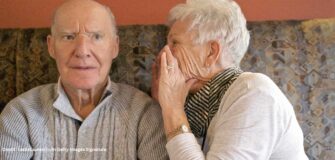Financial toll of cancer exceeds $10,000 for many
Share
A new study from the Daffodil Centre has revealed a staggering financial burden on cancer patients in Australia, with one in ten people diagnosed with cancer in New South Wales (NSW) facing out-of-pocket healthcare costs exceeding $10,000 within the first year following their diagnosis.
The research, based on data from the 45 and Up Study, highlights that over half of those diagnosed within the past two years incurred costs surpassing $1,000, and nearly 10% faced expenses greater than $10,000. These expenses include diagnostic tests, doctor’s fees, medicines, hospital fees, and other costs associated with accessing healthcare.
“We know high out-of-pocket health care costs can increase financial strain, which raises equity concerns for people with limited financial resources,” said David Goldsbury, Statistician and lead author of the study.
“Our findings highlight many concerning trends with cost-of-living pressures putting a strain on all Australians, especially people with cancer at such a vulnerable time.”
The financial strain is not just limited to patients. Michelle Bass, Manager of Client Experience at Cancer Council NSW, noted a 29% rise in demand for financial support services during the 2023 financial year, with the trend continuing into 2024.
“The financial cost of cancer is significant, impacting both cancer patients and their caregivers who often have to face significant out-of-pocket expenses, and income loss from an inability to work,” Bass said.
For patients like Margie Ely, who was diagnosed with stage 3 breast cancer in 2022, the financial toll extends beyond medical expenses. After taking sick leave for numerous hospital appointments, Ely faced demotion at work, leading to a loss of income.
“It intimidated my previous company and I was demoted to a lower position. They felt my diagnosis meant I was no longer capable of doing my work, which was heartbreaking,” Ely shared.
The demotion forced Ely to seek assistance from Cancer Council’s 13 11 20 Information and Support Service. “I had to sacrifice my jobs and income to prioritize attending hospitals and doctor’s appointments, leaving me with less time to spend with my little ones,” Ely said. She struggled to pay her mortgage and cover living costs, a battle many cancer patients face as they juggle treatment with the realities of everyday life.
The study and the personal stories behind the statistics underscore the urgent need for government intervention to alleviate the financial burden on Australians affected by cancer. With the dual pressures of out-of-pocket healthcare costs and the rising cost of living, cancer patients are facing an increasingly distressing financial landscape.
Ritchelle is a Content Producer for Healthcare Channel, Australia’s premier resource of information for healthcare.





